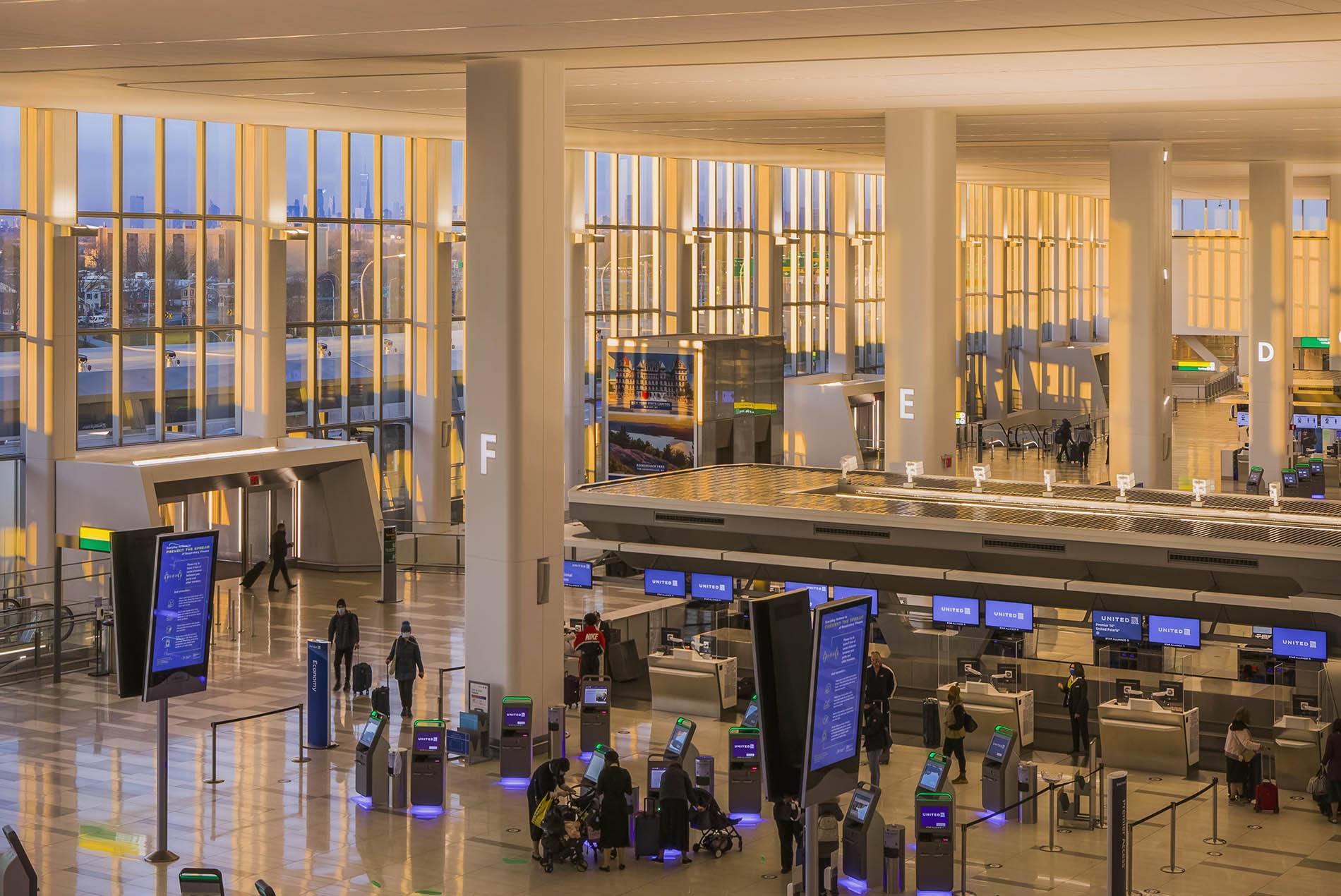The video series features experts in engineering and design, breaking down a common problem and providing design solutions to improve the built environment.
HOK’s Design Principal Peter Ruggiero recently took the Wall Street Journal’s Pro-Perfected behind the scenes of airport terminal design. The 8-minute video features Ruggiero sharing architecture and planning strategies to make air travel more seamless, efficient and enjoyable. Find highlights and watch the full video below.
Creating a Smoother Start for Travelers
Airports are divided into landside (check-in and pre-security) and airside (post-security gates and amenities). Historically, landside spaces used linear check-in counters. But with more travelers checking in online, that configuration disrupts traveler flow.
Ruggiero proposes check-in kiosks perpendicular to the building entrance. This layout supports multiple passenger types—families, frequent flyers and those needing assistance—with better visibility and less congestion.
Letting the Space Speak
Rather than relying on signage alone, Ruggiero advocates for intuitive wayfinding—designing ceilings, flooring, lighting and other architectural elements to subtly direct travelers.
“A well-designed space should tell you where you’re going,” Ruggiero says. “Signage is there to reaffirm you’re going in the right direction.”
Going Through Security: Less Stress, More Flexibility
Security screening has become one of the most complex parts of the airport journey. While TSA regulations require a hard barrier between landside and airside, this often interrupts transparency and causes bottlenecks.
Ruggiero recommends lower ceilings and fewer permanent elements at screening points to allow security to adapt over time. For example, instead of installing plumbing-heavy restrooms near security, flexible spaces like offices can be reconfigured as screening needs evolve.
Rethinking Retail and Open Spaces
Once past security, terminals should feature open, inviting spaces that encourage exploration. That means replacing shopping and dining nooks tucked along the walls with pavilion-style open hubs that blend retail and restaurants into the flow of foot traffic.
“It’s about creating a clearly defined but not prescribed path of circulation,” Ruggiero says.
Terminal Configuration: Balancing Planes and People
Terminal layout is a balancing act. Designers need to accommodate large aircraft and keep passengers oriented and moving. Ruggiero breaks down the pros and cons of different terminal configurations—from ‘finger piers’ to satellite islands.
Linear satellite terminals maximize gate access for planes but often require passengers to use underground trains or passageways to connect to their terminal. This can disorient travelers. In contrast, terminals with finger piers (curved paths and above-ground connectors) preserve spatial awareness, helping passengers stay grounded.
Celebrating Arrivals
Departures often get the design spotlight, but arrivals are just as important. “The airport is a front door to a city,” Ruggiero says, yet many arrival spaces are buried below ground.
At LaGuardia Airport’s new Terminal B, Ruggiero and the HOK team flipped that script. Arriving passengers descend a series of cascading escalators, with views over the departures hall, before reaching baggage claim. The effect is a sense of clarity, welcome and wonder.
“We want everyone to feel that they have this elevated moment,” Ruggiero says.
